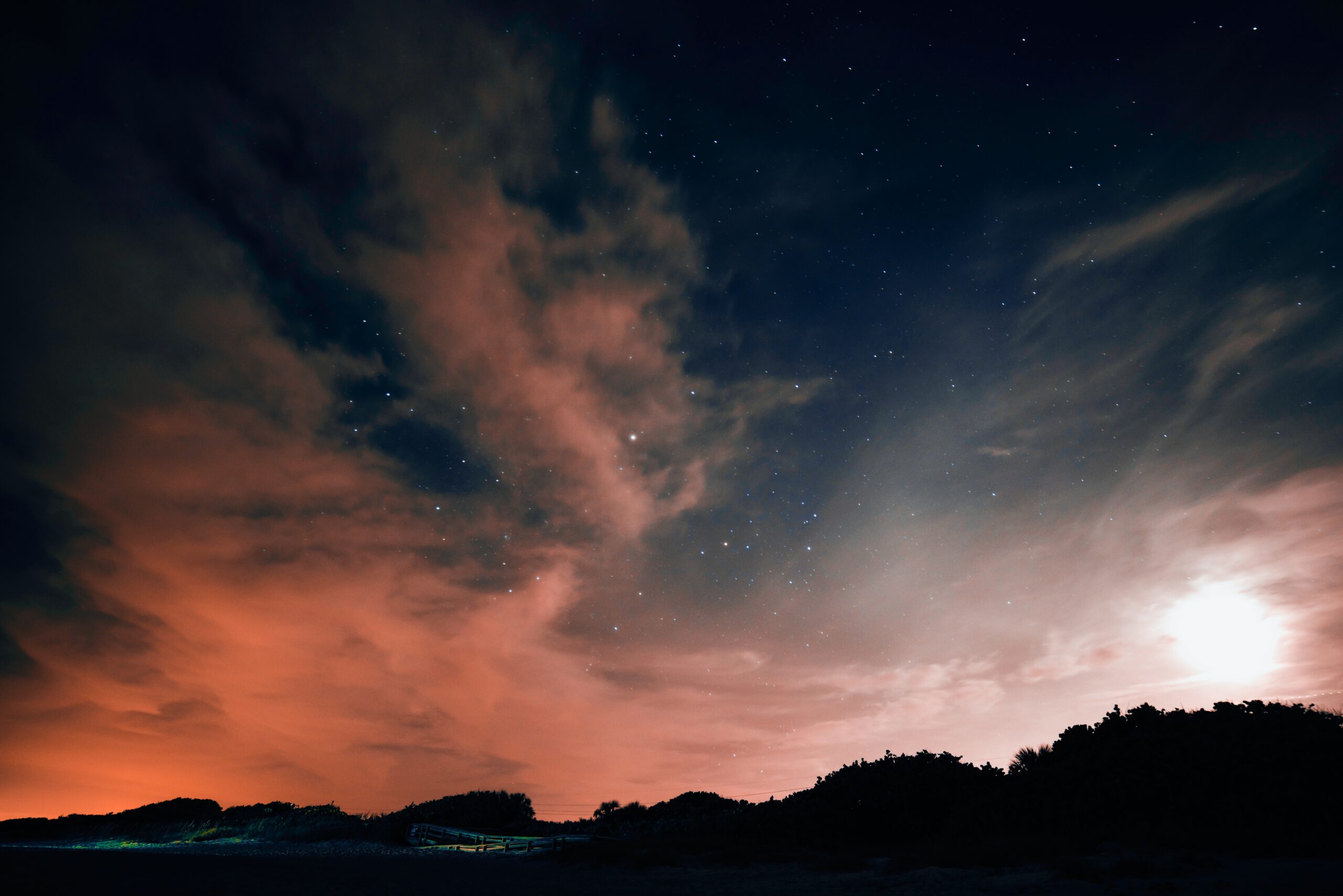
DAY TWENTY-ONE – MORE LIGHT
Day Seventeen described light in general terms, the sources of light both natural and man-made. Light has long been a way to celebrate life from the lighting of candles and bonfires to symbols for specific, historical events. We celebrate solstice and equinox four times annually and the world’s major religions all have LIGHT as the focus of a major season or holy days. Winter solstice today, 12/21/22, occurs when the Sun appears to reach its most southerly excursion relative to the celestial equator on the celestial sphere (2:28 PM MST). The celestial sphere is a conceptual tool used in spherical astronomy to specify the position of an object in the sky without consideration of its linear distance from the observer. When we look at the sun, the moon and the stars we seldom think about distance or time. We see them as lights in the darkness.
Christianity called Jesus the Light of the world and celebrates his birth at Christmas; In Judaism, Hanukkah is an eight-day, wintertime “festival of lights,” celebrated with a nightly menorah lighting, special prayers and fried foods; The Maccabees came into the Second Temple and there was only enough oil for one day to light the lights that were traditional and that one vial of oil, that miracle that lasted eight days, and therefore, Hanukkah is eight days. Light in Islam is used as a symbol for “God’s guidance” and “knowledge”, a symbol of mercy in contrast to Nar, which refers to the diurnal solar “hot light” i.e. fire. In the Quran, God is stated to be “the light (Nūr) of the heavens and the earth” (Verse of Light). Among many indigenous people, the Sun is the source of life and death, bringing life and heat to the people. In Aboriginal traditions, the Sun is a woman and the Moon is a man.
Diwali, one of the major religious festivals in Hinduism, Jainism and Sikhism, lasts for five days from the 13th day of the dark half of the lunar month Ashvina to the second day of the light half of the lunar month Karttika. (The corresponding dates in the Gregorian calendar usually fall in late October and November.) The festival generally symbolizes the victory of light over darkness. Kwanzaa is celebrated from Monday, December 26, to Sunday, January 1. Although Kwanzaa is primarily an African American holiday, it has also come to be celebrated outside the United States, particularly in Caribbean and other countries where there are large numbers of descendants of Africans. The seven candles represent the seven principles of Kwanzaa – unity, self-determination, collective work and responsibility, cooperative economics, purpose, creativity and faith.
For those not connected to any faith tradition, the sun, moon and stars often become focal points for a life connected to the natural world, its rhythms and seasons. We internalize the meaning of LIGHT in each of our lives according to our beliefs, our traditions and our choices of how we celebrate. May all our celebrations pause to consider the miracles of Light and Life as we know them on this planet in an ever expanding universe.

Comments (2)
A beautiful description of the various cultures that celebrate It in so many different ways… the one important element that is so essential for photosynthesis, which produces food, which sustains so much life and living… LIGHT. Grateful for all of it, and the Source. Celebrate!
It has always been of interest to me that once you peel back all the layers and get down to bedrock, most cultures and religions stand together in LIGHT and LOVE.